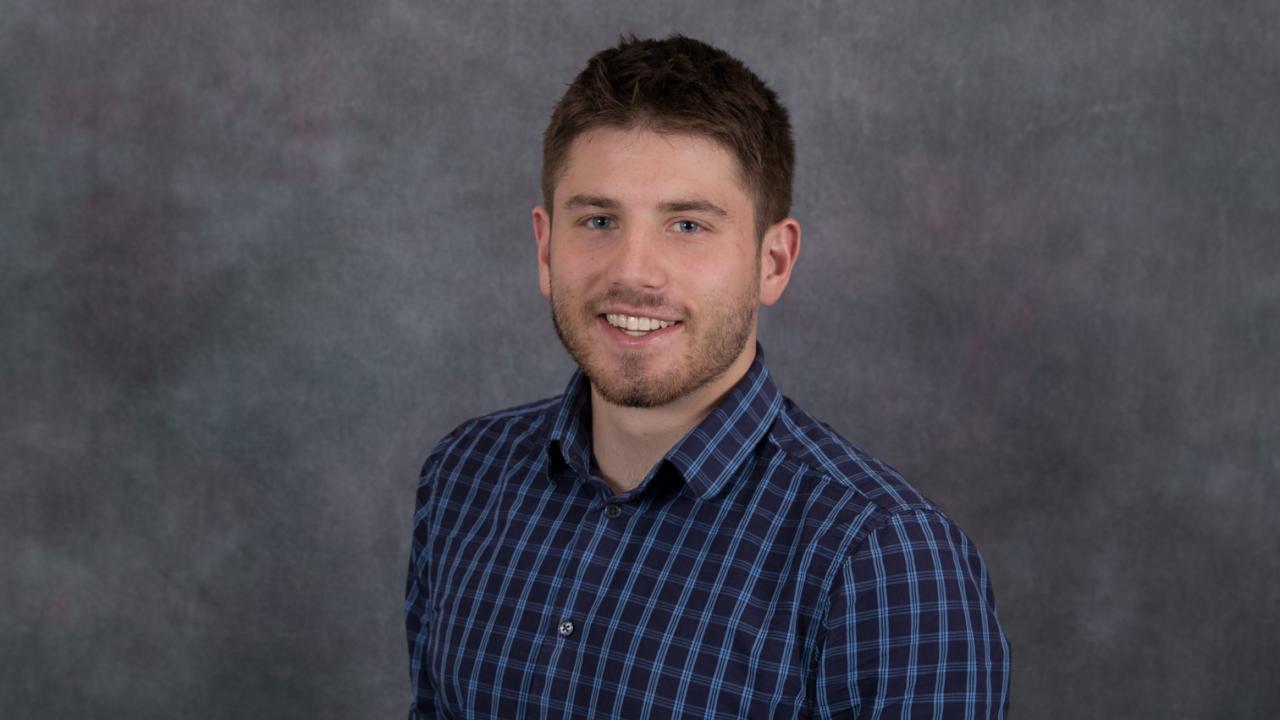
Ph.D. Student Jared Stimac Receives DOE Graduate Student Research Award
Fourth-year Chemical Engineering Ph.D. Candidate Jared Stimac recently received a Department of Energy (DOE) Office of Science Graduate Student Research Award. The award supports graduate students to conduct part of their thesis research at a DOE national lab while providing them training and access to state-of-the-art facilities and resources.
Stimac, part of Materials Science and Engineering Assistant Professor Jeremy Mason’s research group, is one of 65 students from 29 states selected for the competitive program this year. He will work at Lawrence Livermore National Laboratory (LLNL) to develop more accurate molecular dynamics computer simulations to study the radiation resistance of multi-principal element alloys (MPEAs)
MPEAs, also known as high-entropy and medium-entropy alloys, are an emerging class of materials comprised of 3-5 different elements in a single-phase solid solution. MPEAs have incredible mechanical properties and have shown resistance to radiation-induced damage, so they have potential in applications like walls of nuclear reactors and structures that preserve the nation’s nuclear stockpile. However, the mechanism behind this radiation resistance is relatively unknown.

Molecular dynamics simulations, which study and predict behavior on an atomic scale, are a promising strategy for finding out. The key to making these simulations realistic is having an accurate interatomic potential, which “conducts” the program by telling the software which forces exist between atoms.
“Getting that potential correct is really important,” said Stimac. “Subtle errors in the potential can lead to completely different results in a molecular dynamics simulation, so if you rely on a poor potential, you might get something completely un-physical.”
One way to get accurate interatomic potentials is performing quantum-mechanical calculations for all atoms in the simulation, also known as ab initio molecular dynamics. While this works, continually performing these calculations is costly and time-consuming, so machine learning might be able to help. Stimac is particularly interested in developing better algorithms in this area, as an algorithm might extrapolate more information from fewer amounts of high-quality data and lead to both inexpensive and more accurate potentials.
“People talk about building a bridge between quantum mechanical calculations and atomistic simulations, and machine learning is in the middle,” he said. “[It allows you to] scale down the cost of having really accurate molecular dynamics simulations and expands the number of behaviors that can be simulated.”
Stimac and the team will use this new framework to simulate radiation damage in MPEAs. The goal is to see how well resistance is sustained and which compositions of elements in the alloy work best. If successful, the simulation will contribute to the next generation of nuclear technology.
“If you’re a proponent of nuclear energy, or are concerned about how our nuclear stockpiles are preserved, advancing technologies in these areas is important and the simulations will hopefully contribute to our overall understanding,” he said.
Stimac received his B.S. in chemical engineering from the University of Nevada – Reno. He joined UC Davis wanting to work in catalysis, but he was compelled by Mason’s computational materials research and joined the lab despite having few computational skills initially. He is happily surprised to receive the fellowship and excited to carry out the project. He says he’s thankful for the guidance of his mentors, Jeremy Mason and Vasily Bulatov, a scientist at LLNL he’ll be working closely with on this project.
“I can’t put into words how huge it is to have people who really outline what makes a good application and also help you the whole way through,” he said.
